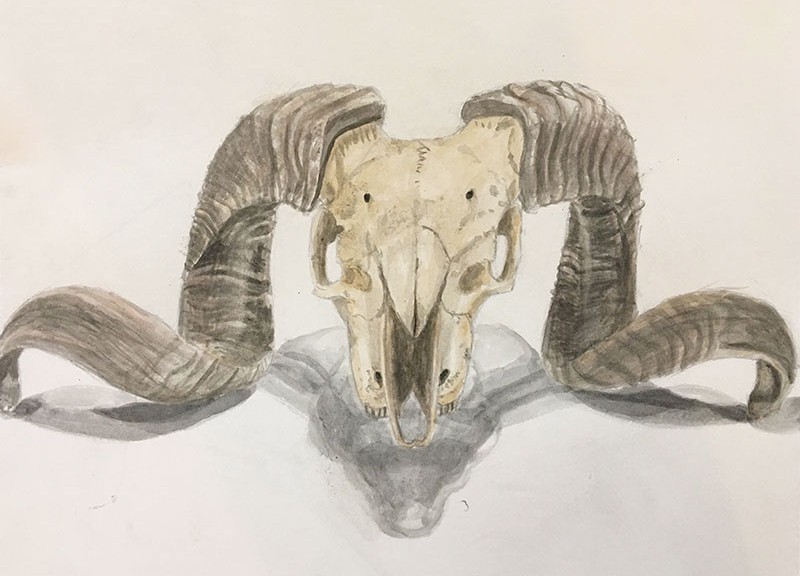After your first session or two with me it becomes clear—while spending hours practicing my block-sketch-draw method, we often find ourselves in a tortoise and hare race.
As you jump ahead to attempt drawing perfectly finished lines, I slow you down to keep your line work light and open. As you slow down to finish a specific area of your drawing, I come along and have you bounce around the entire composition, comparing the size of one shape to another, correcting the distance between an angled line and a curved one, and so on.
This constant process of comparative and relational measuring can prompt students’ inward screams, “When will I ever get to finish a drawing?”

When is a drawing finished? As I work with Level 3 youth student, Nicole to develop her portfolio, we both agree that her watercolor of the ram skull (shown above) is a definite contender for being a finished piece.

On occasion, Drawing Lab students find their way to that glorious moment of holding a finished drawing in their hands. We may spend several coaching sessions to finish a watercolor of a ram skull, or an hour to complete studies of negative space and contour edges that form an egret.

Making it to the finish line may entail an evening spent doing exhaustive charcoal studies of drapery, yet yielding only partially completed work—a small section of light and dark tonal values, or even just a few well-placed lines depicting folded cloth.

“Finished” is in the eye of the beholder. It might be a series of pencil sketches for an animation concept, or a quick sketch of garbage cans, or capturing the angles of a building that brings a smile of completion to your face.
Does it matter if the tortoise or the hare wins? In the end, what really matters are the experiences and insights we take home after finishing our drawing sessions together.



Rob Court
Latest posts by Rob Court (see all)
- Drawing With Friends - April 11, 2022
- Frozen in Time: Cellphone Users as Models to Draw - April 8, 2022
- Getting Out & Getting Real - June 20, 2021
- Life Lines: Sketching the Unseen World of Movement - June 20, 2021
- The Ups & Downs of Urban Sketching - May 9, 2021
